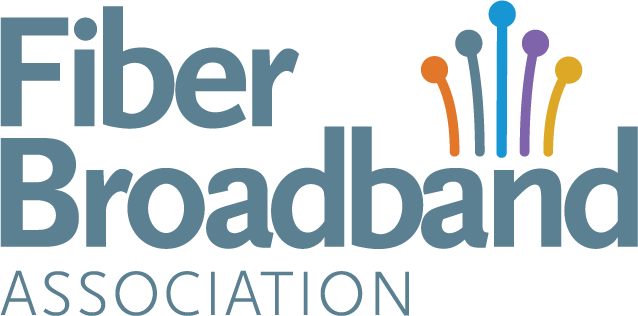FFB July 16: Continuing to Connect Wisconsin: Strategies for Statewide Broadband Access
Continuing to Connect Wisconsin: Strategies for Statewide Broadband Access
As the nationwide broadband expansion accelerates under the federal BEAD (Broadband Equity, Access, and Deployment) program, Wisconsin is emerging as a model of efficiency and commitment—facing unique geographic challenges, underserved locations, and a tight budget with strategic precision. In a recent in-depth conversation with Gary Bolton, CEO of the Fiber Broadband Association, Wisconsin State Broadband and Digital Equity Director Alyssa Kenney offered a detailed look at how her team is navigating this transformative period for broadband deployment.
Kenney, who grew up in rural Vermont and settled in Madison after attending the University of Wisconsin, brings both passion and pragmatism to her role. “I like to say cheese and maple syrup runs in my blood,” she joked, before pivoting to the serious business of connecting rural communities across Wisconsin.
Despite early and ongoing investments in broadband—Wisconsin’s broadband office has been in place since 2014—the state still faces some challenges. “We just updated our numbers and we’re still looking at nearly 200,000 unserved or underserved locations,” Kenney said. “Wisconsin doesn’t get as much BEAD funding per location as many other states, so we really need to bring all the tools to the table and bring some public or private investment dollars to get it done.”
Unique Terrain, Unique Solutions
While often perceived as flat, Wisconsin’s landscape is more complex. They have sandy soil, cranberry bogs, granite bluffs, and more than a fair share of lakes. It’s not all shovel-ready though. These terrain factors make technology selection and deployment strategy critical. The state’s broadband office is known for its data-driven approach. They have a team of folks that’s good at administering and working through the grant process. They know how to evaluate and administer them. An important element to all of this Kenney explained was “We know how to hold people who sign grant agreements accountable.”
Recovering from RDOF Defaults
One of Wisconsin’s biggest setbacks came with the failure of the FCC’s Rural Digital Opportunity Fund (RDOF). Over 100,000 locations were defaulted on by winning bidders, creating a funding and service gap. “That was a major loss of federal investment,” said Kenney. Those locations are now eligible under BEAD, and they’ve used ARPA funds to fill some of the void and get those locations covered.
Wisconsin’s quick action with ARPA dollars has been a major win. “I just want to sing our offices praises for a second on ARPA,” Kenney said. “We put our ARPA dollars out the door fast. Our governor allocated $100 million and we opened up the grant round. Within about 30 days, providers came in strong, and we’re just closing those projects now. With ARPA and the state grant rounds that was done sort of in 2022, all those projects are coming to a close and we had 68,000 locations that were unserved two years ago and are now served.” She went on to say “Our state really has its foot on the gas on broadband connectivity.”
Can $1.1 Billion in BEAD Funding Get the Job Done?
With $1.1 billion allocated through BEAD, Wisconsin still has a steep hill to climb. For many locations, the average of $5,000 per location is enough—but for others, especially the most rural and remote, it might not be. Kenney addressed the need for the right mix of technology and competitive providers to get close to that $5,000 per location. Some areas may still be left out because private businesses can’t or won’t build there, no matter what the incentive.
Additional private investment may help bridge the gap, particularly with the recently passed bonus depreciation tax incentives. But it’s still early. She stated that she hasn’t seen anything since the bill was signed and noted that one of the unique things about broadband is providers don’t have to tell the state where they’re going or what their plans are. Her office often finds out about it around the same time as the FCC. “We have providers throughout the state of Wisconsin who are really committed to this sort of concept of getting the Internet to everybody in the state, and they’re looking at, how do we stack, maybe state dollars, federal dollars, or private investment, to really one do well for our company, but to do well for the state,” she explained. She indicated that they really have bought into the message from both local and state government that we want everyone in our state connected, and we want them connected to something that’s going to work for them for a long time and get them fully immersed in the digital age and digital society.
Workforce Challenges Ahead?
Workforce development remains a concern, especially as all 50 states could face a synchronized BEAD rollout. “We had a great workforce plan using ARPA and state funds, but we had to cancel those contracts after stance was shifted on non-deployment uses,” Kenney said. “It was really disappointing. We wanted Wisconsin residents to get those jobs.”
“Wisconsin has a different construction season than other states,” said Kenney. “I do think we’ve been talking to providers about BEAD for two years now. We’ve been giving them timelines, meeting with them, regularly updating them. I do think the providers that really are sort of rolling up their sleeves and want to do this program have their own plans. They have been doing their own scaling. They’ve been doing their own internal training. They’ve been working to find partner contractors,” she added. She went on to say, “I do really believe that people are preparing very well for this.”
Higher Standards, Higher Stakes
Under the “benefit of the bargain” provision, Wisconsin is raising the bar for broadband applicants. Gary asked about applicant entries and what does an applicant have to bring to the table to be qualified for a priority broadband project. Alyssa explained, “You are right, it was easy before. State broadband offices could look at a technology code, and we could put things into paths, and it made our process and our sorting really clear. And now there’s this huge burden on state broadband offices, because now every project has mixed technology, like satellite — things that are new to some of us.” She went on to discuss how important data and integrity to each and every project is to her office and that they will be asking a lot of technical questions and collect as much information on the equipment, manufacturer, the site, etc. “We want to know, where, exactly, how deep, how high, how much, where are they buying the equipment from, how new is it? You know, what power source, what spectrum, we want to collect all the information and have people really commit to us,” she said. She stated that she needs to make solid determinations and hold everyone in the BEAD program accountable.
Click here to listen to the full episode or find previous episodes of Fiber for Breakfast.




